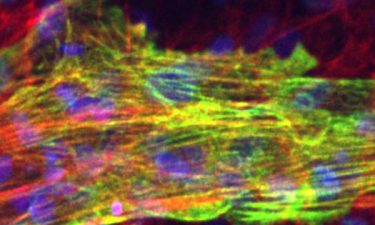Heart attack model developed with human stem cells
Posted: 14 November 2019 | Rachael Harper (Drug Target Review) | No comments yet
A myocardial infarction model has been developed which will contribute to the development of preventive/therapeutic medicine.


Researchers have developed a model of myocardial infarction using cardiomyocytes differentiated from human induced pluripotent stem cells.
The study was conducted by researchers at Okayama University Graduate School of Medicine, Dentistry and Pharmaceutical Sciences, with Ken Takahashi, PhD as corresponding author and Wei Heng, MSc as first author.
Only laboratory animals such as mouse have been used to model diseases including myocardial infarction, but there have been concerns about difference in characteristics of cardiomyocytes, for example, heart rate and action of drugs, based on the difference of gene expression between laboratory animals and humans.


Microscopic picture of cardiomyocytes differentiated from human-induced pluripotent stem cells. Green indicates cardiac troponin protein, showing a typical striated pattern. Red: actin protein. Blue: cellular nucleus (©2019 Okayama University).
Using this model, researchers can evaluate the extent of myocardial tissue damage by microscope morphologically, and by measuring injury-marker proteins and analysing contractility and its synchroneity from recorded movie quantitatively.
Further analysis revealed that gene expression of interleukin-8, an inflammation marker known to increase in acute myocardial infarction, increased in this model.
“This myocardial infarction model will contribute to the development of preventive/therapeutic medicine more effective to humans even without sacrificing animals,” said Ken Takahashi, PhD, assistant professor in the university.
The study was published in the journal Biochemical and Biophysical Research Communications.
Related topics
Research & Development, Stem Cells
Related conditions
Heart attack
Related organisations
Okayama University Graduate School of Medicine Dentistry and Pharmaceutical Sciences
Related people
Ken Takahashi PhD, Wei Heng MSc








